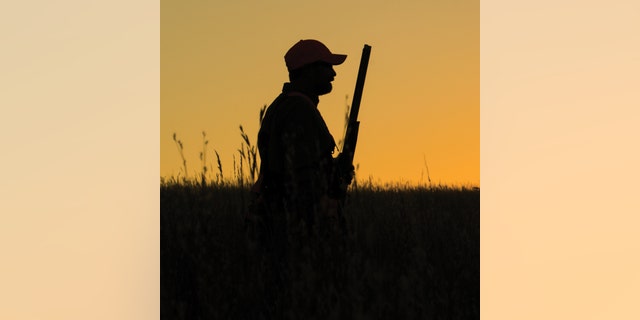The year 2020 brought with it a global pandemic, a wave of unprecedented riots and protests across the county, lingering questions over the funding of police departments, and an unsettling sense of the unknown — prompting a massive hike in gun sales in every U.S. state.
Yet the buying spree wasn’t only ignited in a desire for extra personal defense and security. The year also saw a surge in those trekking into the woods for purposes of hunting – and 2020 may very well be remembered as the year that saved the fast-falling, once-iconic American pastime.
“We’ve also seen an uptick in emails, traffic, and sales of our Deer Hunting 101 online course. People are flocking [to hunting] this year as they have increased time and an opportunity to get outdoors,” Hank Forrester, director of the Alabama-based Hunting Heritage Foundation, told Fox News. “There is also an increased awareness of the possibility of food shortages or issues of modern industrial food systems. Self-sufficiency, a connection with nature, and local, sustainable protein free of animal welfare concerns are all reasons why there are now more hunters.”

.Around 14% of those who took to the sport this year were first-timers, and women also made up a considerable bulk
(iStock)
Office buildings were shuttered in March, and once-clogged city streets were emptied. Strict lockdown orders were imposed, and long-distance travel became the stuff of a former era. But many urban dwellers found themselves migrating out in the open plains. News of halted supply chains followed, prompting some to turn to hunting not only as an outdoorsy, socially distanced avocation, but as a way to stockpile amid a questionable meat supply.
According to professional estimates, around 14% of those who took to the sport this year were first-timers, and women also made up a considerable bulk: Women became the largest-growing demographic, with the number of licenses for women jumping more than 12% on previous years.
GUNMAKER PREDICTS US HUNTING BOOM WILL OUTLAST CORONAVIRUS SOCIAL-DISTANCING RULES
Data from the U.S. Fish and Wildlife Society underscored that the typical profile of an American hunter was a white male 45 years and older, raising questions as to whether the sport would ultimately “age out.” The decades of decline seemed irreversible – until, of course, 2020 hit.
“The decline in hunting has stemmed from the decline in participation in the Baby Boomer generations who are aging out of hunting and make up the largest cohort of current hunters,” Forrester explained. “Later generations weren’t recruited into hunting at the same rate as the Boomers, and a lot of that probably has to do with the urbanization in the U.S.”
And according to Jared Wiklund, a spokesperson for the nonprofit conservation group Pheasants Forever, the decline in hunters also stems from issues of access to public areas and a lack of available mentor programs to keep a steady influx of new hunters.
“Our greatest conservation challenge at this time in history may be the long-term decline in the American hunter. According to the 2016 National Survey of Fishing, Hunting & Wildlife Recreation, put out by the U.S. Fish & Wildlife Service every five years, the number of individual hunting license buyers has dropped from over 14 million in 1991 to around 11.5 million in 2016,” he said. “Even more alarming is that hunters now make up only 4.5% of the overall U.S. population, whereas in 1991 hunters made up 7.3% of the U.S. population.”

For a number of state wildlife agencies, who bear the responsibility for much of the species management and conservation work in the country and typically receive little in federal funds, the swell of hunters has been an unexpected silver lining amid a bleak year.
(Credit Pheasants Forever)
RECORD NUMBERS OF AMERICANS TRY TO BUY GUNS
But with the twists and turns of the year (hopefully) gone by, the renewed interest may have a long-lasting impact.
For a number of state wildlife agencies, who bear the responsibility for much of the species management and conservation work in the country and typically receive little in federal funds, the swell of hunters has been an unexpected silver lining amid a bleak year.
According to the Association of Fish & Wildlife Agencies, more than 60% of its funding stems from license fees and related taxes on hunting and fishing, and the declining trend had taken a toll on conservation programs.
Wiklund stressed that personal and anecdotal evidence suggests that states throughout the pheasant, quail, and prairie grouse range all experienced a positive bump in the number of hunters taking to the landscape.
“Hunting is important on multiple levels, but none more so than the funding it provides to fuel wildlife and habitat conservation efforts throughout North America,” he continued. “From license and stamp purchases that support state natural resources agencies and habitat projects to Pittman-Robertson Act funding — an excise tax on guns, ammunition and other equipment that provides hundreds of millions of dollars per year for wildlife management — hunters remain the nation’s most dedicated conservationists.”
FOLLOW US ON FACEBOOK FOR MORE FOX LIFESTYLE NEWS
The National Shooting Sports Foundation (NSSF) has documented that hunting license sales have grown more than 12% on the previous year, and with it, an expectation of over 1 million more hunters than in 2019, the Wall Street Journal noted. And these numbers have a direct impact on individual states and their revenues.
For one, Michigan recorded over 545,000 hunting license purchases through mid-November, a growth of 10% over 2019, the Department of Natural Resources noted. First-time licenses were up 80%, while the total of women seeking licenses increased 20% and were up 18% for those aged 9 and under.
In Wisconsin, gun license sales and archery license sales grew 12% and 9.5%, respectively. Nevada documented a leap of 30% granted hunting licenses, with more than 50% more individuals completing its hunter safety class. Washington saw a double-digit rise in the number of residents graduating from its hunting programs compared to 2019; Idaho sold some 28% more hunting licenses to first-timers; and Texas sold 7% percent more hunting/fishing license packages in contrast to the same time period a year ago.
Moreover, Maine issued an unprecedented number of deer permits — around some 9% more than usual. And California’s Department of Fish and Wildlife noted a 10% growth in annual resident hunting licenses.
CLICK HERE TO SIGN UP FOR OUR LIFESTYLE NEWSLETTER
“The ‘eat organic’ and ‘field to fork’ movements were also accelerated due to COVID-19… as newcomers spoke with potential mentors and spent time around other hunters, they became engaged in the camaraderie, enjoyed the outdoors in a way they have not previously, and were able to partake in the spoils of a successful hunt,” said Chip Hunnicutt, a representative for the Washington D.C.-based Safari Club International. “Hunting is family-friendly and there is so much more to the sport than the kill.”
In a similar vein to the hunting spikes, many pockets of the U.S. have also witnessed renewed interest in fishing. The Recreational Boating and Fishing Foundation logged an additional 3 million licenses sold this year.
Vermont documented the biggest rise in hunters and anglers than at any point in the past three decades, with 87,000 Vermonters purchasing fishing licenses in 2020.
Nonetheless, hunting has long held challenging obstacles for newcomers. It requires more expensive gear and equipment than a simple day at the range, and often the attainment of a formal hunter-education program to then be eligible for the purchase of a license. Further coaching or teaching may also be needed during one’s first venture into the woods.
“Hunting is perceived has daunting to get into with many perceived barriers to entry. Truthfully, with a little education, the help of an experienced current hunter or mentor, and some trials afield, anyone can become a hunter and realistically fill their freezers with local, sustainable protein,” Forrester said.

It remains to be seen if hunting is back for good – or whether numbers will again dip as the world trickles back into something of normalcy.
(iStock)
But with the pandemic averting much of life into the digital realm, it has also made it easier for those wanting to try the sport to get qualified. Most states eliminated the in-person assessment and sessions in favor of online safety and instruction courses, and officials have widely remarked that there is no evidence to indicate that safety has been compromised or more mishaps have taken place.
CLICK HERE TO GET THE FOX NEWS APP
Still, it remains to be seen if hunting is back for good – or whether numbers will again dip as the world trickles back into something of normalcy.
“Hunting’s resurgence is going to depend greatly on the existing hunters continuing to embrace these newcomers and showing them the way,” Hunnicutt added. “The growth pattern of hunters is to enjoy the experiences in their immediate locale or state, then explore opportunities in other states or pursuing other species, and becoming more involved in the conservation aspects of hunting that help support wildlife and its habitat.”

